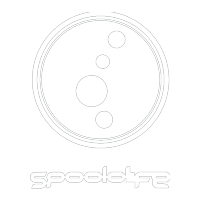
With the May 15, 2015 release of his sophomore album, True Colors, Zedd issued a statement to listeners and music critics alike: stylistically, you can’t put him in a box.
In the five years that have followed the LP’s arrival, this has not only held true–it is also precisely what has allowed Zedd to navigate the electronic and pop sonic spaces with inimitable dexterity. From electro house to progressive house and pop-electronic hybrids, Zedd’s genre-roving productions reflect both his refusal to conform to a musical mold and his inexhaustible capacity for aesthetic reinvention. As visible on True Colors in 2015 as they are now in 2020, these characteristics confer an evergreen novelty to Zedd’s sound.
Electronic experimentation is at the heart of True Colors, a synesthetic concept album that comprises 11 tracks, each of which represents a different color. In aurally embodying distinctive hues, True Colors’ inclusions tonally stand apart from each other. The fervently verbalized declaration, “All my life, one page at a time/I’ll show you my, my true colors,” of the title track and its arching orchestral chords: both components cause “True Colors” to simmer with the bold red hue that Zedd assigned the song. The blazing scarlet character of “True Colors” exists in stark contrast to the more neutral, piano-girded “Papercut,” which symbolizes the color white.
“True Colors” and “Papercut,” however, are only two hues in the larger picture that is True Colors, as the plural—“colors”—indicates. The album’s title encompasses the broad spectrum of colors that Zedd sonically captures, and also serves as an unabashed declaration of Zedd’s artistic identity. Upon streaming True Colors in its entirety, it becomes clear that only calling Zedd an “EDM producer” would be as limiting as calling him a producer of ‘red’ or ‘white’ music, for instance. The 11 element-spanning songs that make up True Colors showcase the diverse range of Zedd’s stylistic interests and capabilities, and with them, Zedd showcases his scope as an artist.
Case in point, True Colors’ opening cut, “Addicted To A Memory,” whereon Zedd allows the guitar to play a central constructive role. Needless to say, guitar is not the first instrument that electronic enthusiasts would expect to encounter on a dance release, but Zedd integrates it in an adroit demonstration of his dynamism.
The diversity of Zedd’s technical approaches on True Colors is further embodied at the 2:04 mark in the chromatic “Done With Love,” where Zedd’s classical foundation is audible. Zedd has consistently credited Daft Punk as one of his electronic influences, and this, the attentive will note, is where Daft Punk’s influence filters in, with “Done With Love’s” vocal taking on a vocoding effect akin to Daft Punk’s.
Although it might sound cliché to call True Colors a “colorful” offering, it certainly would not be off base. The production, written entirely on the piano, is defined by its aural swells of sound, like the vigorous electro cacophony at the ten second mark in “Transmission” (black), or the relentless rail of a breakdown (2:53) in “Bumble Bee” (yellow). These punchy sound rushes are regular occurrences across True Colors that imbue the album with energy.
For all of the new sonic territory that Zedd treads on True Colors, there nevertheless are glimmers of the familiar. Notably, “Bumble Bee” harkens back to the electro-charged sound on which Zedd cut his teeth in the early 2010s. In resembling “Shave It Up” of Zedd’s 2012 debut, Clarity, “Bumble Bee” punchily bridges Zedd’s sound on True Colors and Clarity.
The vocal-centric constructions that catapulted Zedd into the cultural mainstream (see “Clarity” and “Stay The Night,” to name just a few) following the release of Clarity surface again on True Colors. Pairing the right female vocal with an arrangement has remained one of Zedd’s stylistic sticking points since the Clarity days, and yet again, it pays off on True Colors, where sung contributions from Bahari, Selena Gomez, and Echosmith fit so synergistically with the instrumentals that Zedd has crafted, that it’s a wonder that they were not a part of the equation from the very first chord.
Although listeners are justifiably attracted to True Colors‘ radio-charting constituents, “I Want You To Know” and “Beautiful Now,” their seven minute and 22 second antithesis, “Papercut,” is perhaps where Zedd’s following sees his cerebral, classically-guided conceptualization of musical production in its fullest and most focused form. An auspicious amalgamation of piano chords, bass, synths, and Troye Sivan‘s alto vocal, “Papercut” underscores Zedd’s ability to sonically relate a narrative without relying solely on lyrics. From its initial slow progression, to the crisp arch of its chords, “Papercut” mimics the transient emotional spike that its lyrics detail.
The longest song that Zedd has released to date, “Papercut” was–and remains–a critical inclusion of True Colors. The fourth single to precede the LP, “Papercut” powerfully conveyed Zedd’s capacity to think beyond the traditional structure of an EDM track, replete with festival-suited builds and drops. Importantly, it also showed his ability to deftly eschew this electronic template.
“Papercut” is a microcosm of Zedd’s larger project on True Colors: exhibiting the vivid range of his musicality, without dimming these colors based on listener expectation. Five years later, Zedd’s mission remains his same and his colors, just as bright.
Featured image: Rukes
Source: dancingastronaut.com


















![Lockdown Livestream Guide 006: Room Service Festival, Middlelands, PlayOn Festival, and more [Watch]](https://i1.wp.com/www.spoololife.info/wp-content/uploads/2020/04/gettyimages-515220084-1024x1024-1-2-150x150-2.jpg?resize=100%2C70)